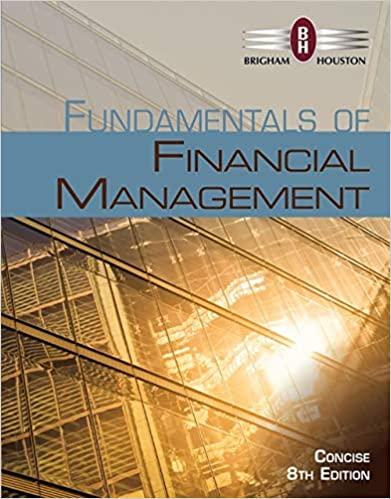EQUILIBRIUM STOCK PRICE The risk-free rate of return, rRF, is 6%; the required rate of return on
Question:
EQUILIBRIUM STOCK PRICE The risk-free rate of return, rRF, is 6%; the required rate of return on the market, rM, is 10%; and Upton Company’s stock has a beta coefficient of 1 5.
a. If the dividend expected during the coming year, D1, is $2 25 and if g a constant 5%, at what price should Upton’s stock sell?
b. Now suppose the Federal Reserve Board increases the money supply, causing the riskfree rate to drop to 5% and rM to fall to 9%. What would happen to Upton’s price?
c. In addition to the change in Part
b, suppose investors’ risk aversion declines and this, combined with the decline in rRF, causes rM to fall to 8%. Now what is Upton’s price?
d. Suppose Upton has a change in management. The new group institutes policies that increase the expected constant growth rate from 5% to 6%. Also, the new management smoothes out fluctuations in sales and profits, causing beta to decline from 1 5 to 1 3.
Assume that rRF and rM are equal to the values in Part
c. After all these changes, what is its new equilibrium price? (Note: D1 is now $2 27.)
AppendixLO1
Step by Step Answer:

Fundamentals Of Financial Management Concise Edition
ISBN: 9781285065137
8th Edition
Authors: Eugene F. Brigham, Joel F. Houston





